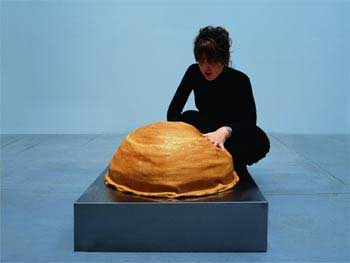a couple of years ago, i was planning on researching crowd behavior for my dissertation. i was even going to use halloween on state street for a case study! i think trying to understand crowd mentality is fascinating. when you're in a mob of people, what influences your decision to walk one way or the other? line of sight? proximity to certain locations or groups of people? the relative densities of clusters of people surrounding you? the world expert in this field is paul torrens, and he has just published his latest work:
A prototype that Torrens has developed models the evacuation of a crowded area during a fire when there is only one point of escape, but he has used his method to develop a primitive model of a situation in which a disease spreads through casual contact, and he is attempting to create scenarios in which agitated crowds turn into unruly mobs.
LiveScience article on crowd modeling
another kind of modeling i'm interested in is cultural interaction models. for example, in palestine right now, fatah and hamas are exchanging rocket attacks, vying for power in the gaza strip. (
link to New Economist story) if there was a neighborhood in gaza that was completely neutral, neither supporting fatah nor hamas, but we were able to understand (and potentially index) their beliefs, ideologies, socio-economic status, trusts, doubts, etc., what are the kinds of things that would sway the residents of this neighborhood to fatah or hamas? what are the factors that need to be assessed to determine the relative levels of cultural attraction towards fatah and hamas? i'm not sure if such models exist, or are currently being employed by the US state department, but i'd wager they are since such models could provide us additional insight into a variety of situations- insight which would be based off of a concentration of all our intelligence on the people and groups/cultures at play in a given area.
Sphere: Related Content
 from the Economist:
from the Economist:






